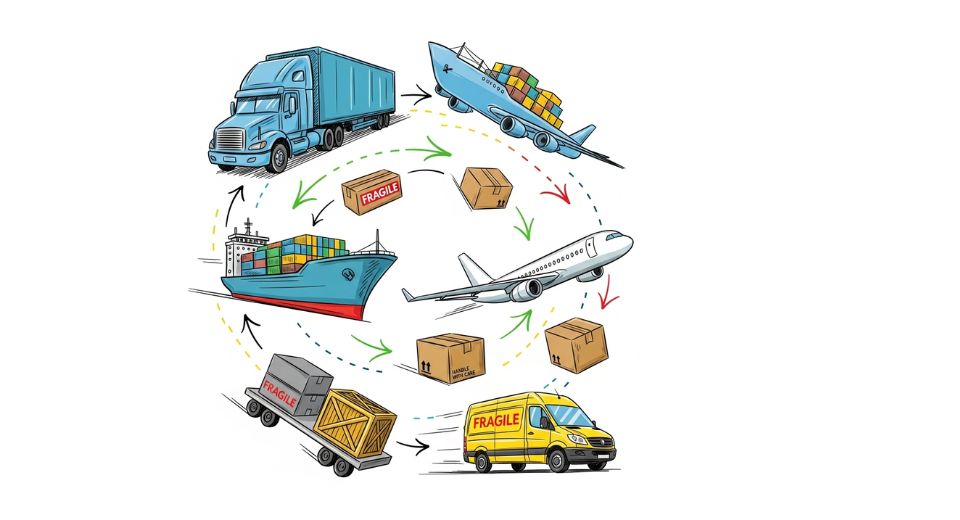Logistics Services Market To Reach $2,570,323.30 Million by 2032

A report from Metastat Insight on the global logistics services market sparks discussion with thoughtful observation and shrewd insight that transcends typical opinion. Seventeen years of industry experience have created a better sense of subtlety of motion in supply chain dynamics, carrier scheduling, and client demand. That experience lends richness to the presentation of a nuanced tale avoiding superficial generalities. Discovery is achieved through the observation of shifting service models, new layers of technologies, shifting regulatory overlays, and shifting stakeholder behaviours. All of the points in the discussion return to the ways in which providers reimagine service offerings to address pressure from cost consciousness, sustainability requirements, and digitalization.
Technological integration emphasis is achieved through tales of intelligent routing systems, demand forecasts, and warehousing capabilities. Advanced systems increasingly link standalone logistics nodes to create continuity across transportation segments in land, air, and sea modes. Layers of orchestration in the cloud deliver increased visibility across shipment lifecycles and enable proactive exception management. Geospatial analysis inputs to decision engines optimize load assignments, routing choices, and transshipment facility use. Automation and robotics spread across sorting devices in distribution facilities to limit manual manipulation and optimize throughput. Container fleet sensor and IoT gear provide real-time monitoring and tracking, enabling shipments, sensitive freight, and high-value freight temperature-controlled control. Machine-based instructions guarantee anomaly detection and predictive maintenance for the fleet, lessening unscheduled downtime.
Evolutionary customer needs for agile, resilient supply chains reshape portfolio designs. Logistics carriers reach even further to offer bespoke, end-to-end solutions that integrate legacy freight forwarding and value-added services such as reverse logistics, last-mile delivery, and packaging optimization. Channel expansion of e-commerce drives the adoption of micro-fulfillment centers positioned near city centers to deliver quick delivery windows. Cold-chain logistics continues to necessitate focus from specialty carriers with intrinsic temperature control and real-time traceability. Market demand for environmentally preferable modes of transportation i.e., alternative-fuel fleets and carbon offset programs reshapes investment plans. Greater cooperation among supply chain partners, carriers, and infrastructure providers makes shared-use corridors and load consolidation projects possible.
Regulatory regimes place constraint as well as opportunity on the table. Growing decarbonization emphasis places a premium on fuel consumption and emissions profiles, spurring the use of cleaner propulsion options and emissions reporting systems. Modernization of trade and customs policy running in parallel with geopolitics realignment influences route planning and terminal deployment strategy. Harmonization of the regional trade area increasingly makes border-crossing efficiency easier, while security needs and expectations on data privacy add further layers of compliance. Digitization of trade stimulates investment in blockchain-based documentation, electronic bills of lading, and secure data exchange platforms.
Labour trends in logistics networks address more emphasis on workforce automation made possible by skill rebalancing initiatives. With robotics and automated sorting reducing manual labour required in warehouses, human labour is shifted to monitoring systems, exception handling, and strategic planning. Supply chain professionals acquire skills through training programs as they master analytics tools, digital platforms, and interpretation of sustainability information. Strain on the labour market especially around port districts and truck networks brings testing with autonomous vehicle pilot programs and remote terminal operations.
Financial results exhibit advanced interplay between service quality and cost reduction. Investment in automation and digital infrastructure is yielding operating efficiencies, though the same capital investment must be appropriately targeted. Contract designs evolve to tie incentives to reliability, visibility, and sustainability performance. Integrators and carriers attempt to partner with infrastructure participants and tech providers to recover development costs while accessing innovation ecosystems.
Customer needs highlight demands for transparency and responsiveness. Shipment visibility websites deliver live data streams, estimated arrival ranges, and exception notifications. Dashboards typically include key performance indicators for delivery accuracy, transit time predictability, and handling quality. Two-way feedback loops between shippers and service providers support continuous improvement cycles. Surveys capture client opinion regarding sustainability certification, responsiveness to disruptions, and likelihood of consolidated logistics options.
Threat environments pose challenges that strategic priorities need to resolve. Supply chain disruption geopolitical tension, natural disaster need flexible rerouting, buffer storage capacity, and contingency inventory planning. Cyber attacks on digital platforms and data warehouses induce spending on threat detection and resilience capabilities. Infrastructure threats at seaports, rail terminals, and road networks necessitate diversification of transit modes and routes. Cross-border complexity induces use of scenario simulation tools to stress test network resilience.
Competitive distinction derives from innovation in service, vertical integration, and solution bundling. Motor carriers diversify into ancillary businesses such as warehousing, customs brokerage, and freight finance. Transportation integration, handling, documentation, and reverse logistics value-added packages of services are bundled offer sets attractive to global shippers seeking effective supply chain partners. Strategic acquisition and alliances bring distinctive capabilities under combined brand umbrellas, reaching for extended services while increasing industry presence.
Regional diversification tactics address economic transformation and shifts in trade orientations. Growth is pursued in consumers in emerging markets, infrastructure investment, and lengthening the bases of manufacturing. Deployments in logistics are reshaped by building regional platforms, feeder systems, and multimodal links that are informed by demand trends in Asia, Latin America, Africa, and Eastern Europe. The convergence of old roads and new roads underpins risk-balanced network development.
Sustainability storytelling is more than green power. Packaging return programs, carbon monitoring, and route optimization efforts speak to growing care for the Earth. Carrier companies experiment with biofuels, electricity, and hybrid powertrains in fleets. Carbon offsetting services may be included with premium service packages, serving ecologically conscious consumers.
The landscape continues to embody innovation in data integration, supply chain robustness, green transformation, and service convergence. Transformation continues to redefine provider capability in freight orchestration, infrastructure management, and client interaction. Reference to a report by Metastat Insight into the global market for logistics services anchors this narrative in research awareness and verifies the journey through industry fundamentals to concentrate on a future framed in terms of technology, sustainability, and strategic alliance.
A parting observation referencing international logistics services market analysis offered by Metastat Insight validates authenticity of comment and creates expectations for continued evolution in transportation, warehousing, and supply chain environments.
Drop us an email at:
inquiry@metastatinsight.com
Call us on:
+1 214 613 5758
+91 73850 57479
 Agriculture
Agriculture
 Aerospace and Defense
Aerospace and Defense
 Automation & Process Control
Automation & Process Control
 Automotive and Transportation
Automotive and Transportation
 Banking & Finance
Banking & Finance
 Biotechnology
Biotechnology
1.png) Chemicals and Materials
Chemicals and Materials
 Consumer Goods
Consumer Goods
 Energy and Power
Energy and Power
 Food and Beverages
Food and Beverages
 Healthcare IT
Healthcare IT
 Information & Communications
Information & Communications
 Manufacturing and Construction
Manufacturing and Construction
 Packaging
Packaging
 Pharmaceuticals
Pharmaceuticals
 Electronics and Semiconductor
Electronics and Semiconductor
 Medical Devices
Medical Devices







 US: +1 3023308252
US: +1 3023308252






